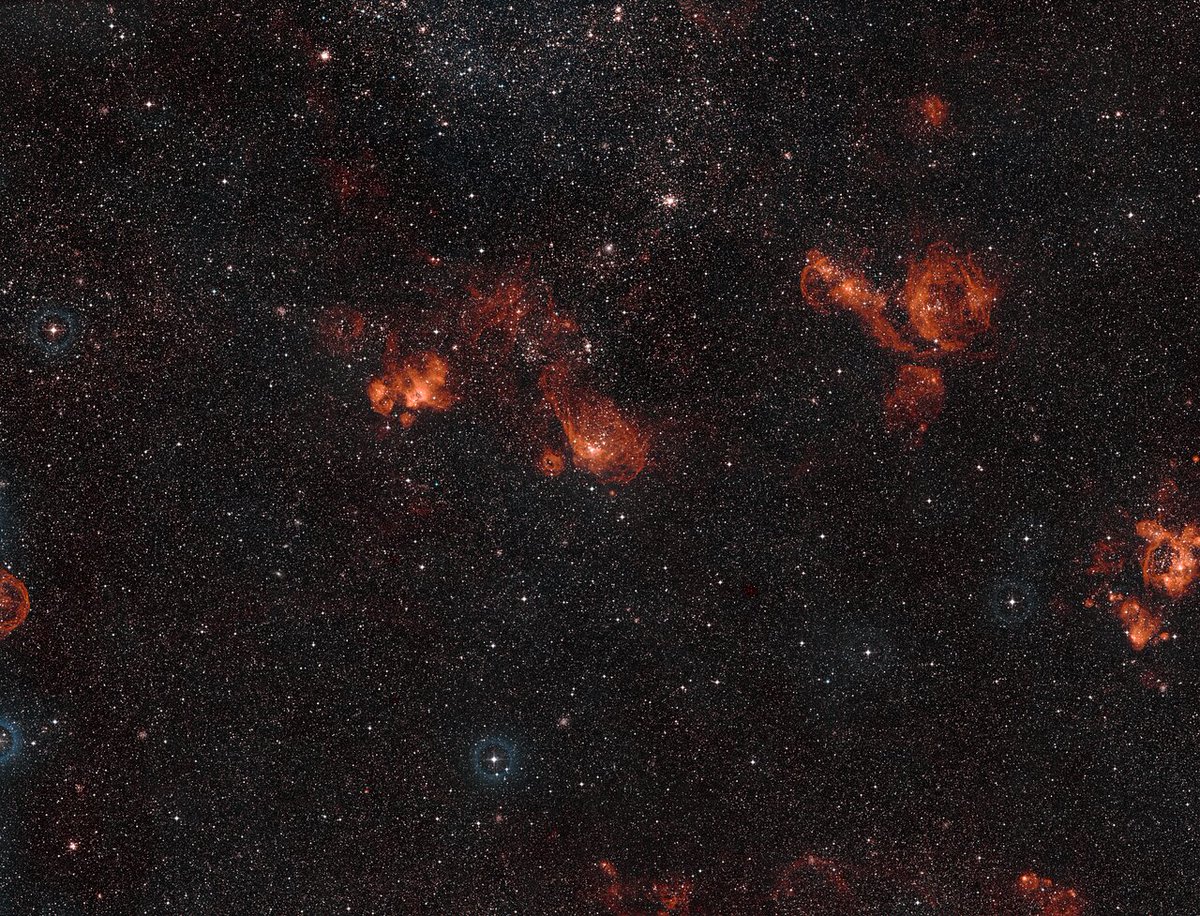
Breaking News 📣 #Hubble breaks new record detecting the most distant individual star ever seen. Nicknamed Earendel by the authors, this star existed within the first billion years after the Universe’s birth in the Big Bang 🎆
Full story: 🔗 esahubble.org/news/heic2203/
Thread 👇
Full story: 🔗 esahubble.org/news/heic2203/
Thread 👇

📌 The newly detected star is so far away that its light has taken 12.9 billion years to reach Earth, appearing to us as it did when the Universe was only 7% of its current age.
🗨️ "It’s like we’ve been reading a really interesting book, but we started with the 2nd chapter & now we will have a chance to see how it all got started,” said astronomer Brian Welch of the Johns Hopkins University in Baltimore, lead author of the paper
📹 Our #SpaceSparks episode tells you the story in brief. Check it out here:
📌 It would be impossible to see Earendel at such a great distance without the aid of natural magnification by a huge galaxy cluster sitting between us and Earendel.
📌 The mass of this galaxy cluster has warped the fabric of space, creating a powerful natural magnifying glass 🔎 that distorts and greatly amplifies the light from distant objects behind it. The star brightness was magnified a thousandfold or more.
📌 The research team estimates that Earendel is at least 50 times the mass of our Sun and millions of times as bright, rivalling the most massive stars known. Check out this video to get a sense of star scale:
📌 Earendel will be observed by @ESA_Webb later in 2022. #Webb’s high sensitivity to infrared light is needed to learn more about the star, because its light is shifted to longer infrared wavelengths by the expansion of the Universe. #BFFinSpace
@ESA_Webb 🗨️ “Webb’s images and spectra will allow us to confirm that Earendel is indeed a star, and to constrain its age, temperature, mass and radius,” explained team member Jose Maria Diego of @IFCA_CSIC_UC in Spain. 🎥 @NASAGoddard
@ESA_Webb @IFCA_CSIC_UC @NASAGoddard 🔖 Follow @ESA_Webb to learn more about the mission progress
Main image credits: @NASA @esa B. Welch (JHU) D. Coe (STScI) A. Pagan (STScI)
Main image credits: @NASA @esa B. Welch (JHU) D. Coe (STScI) A. Pagan (STScI)
• • •
Missing some Tweet in this thread? You can try to
force a refresh





